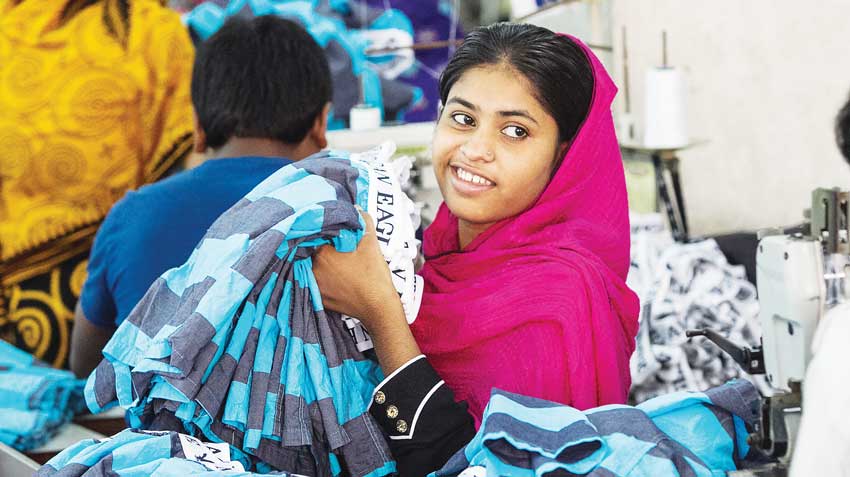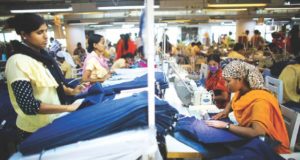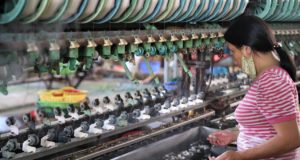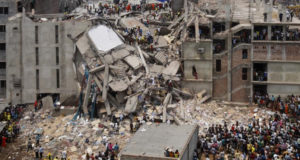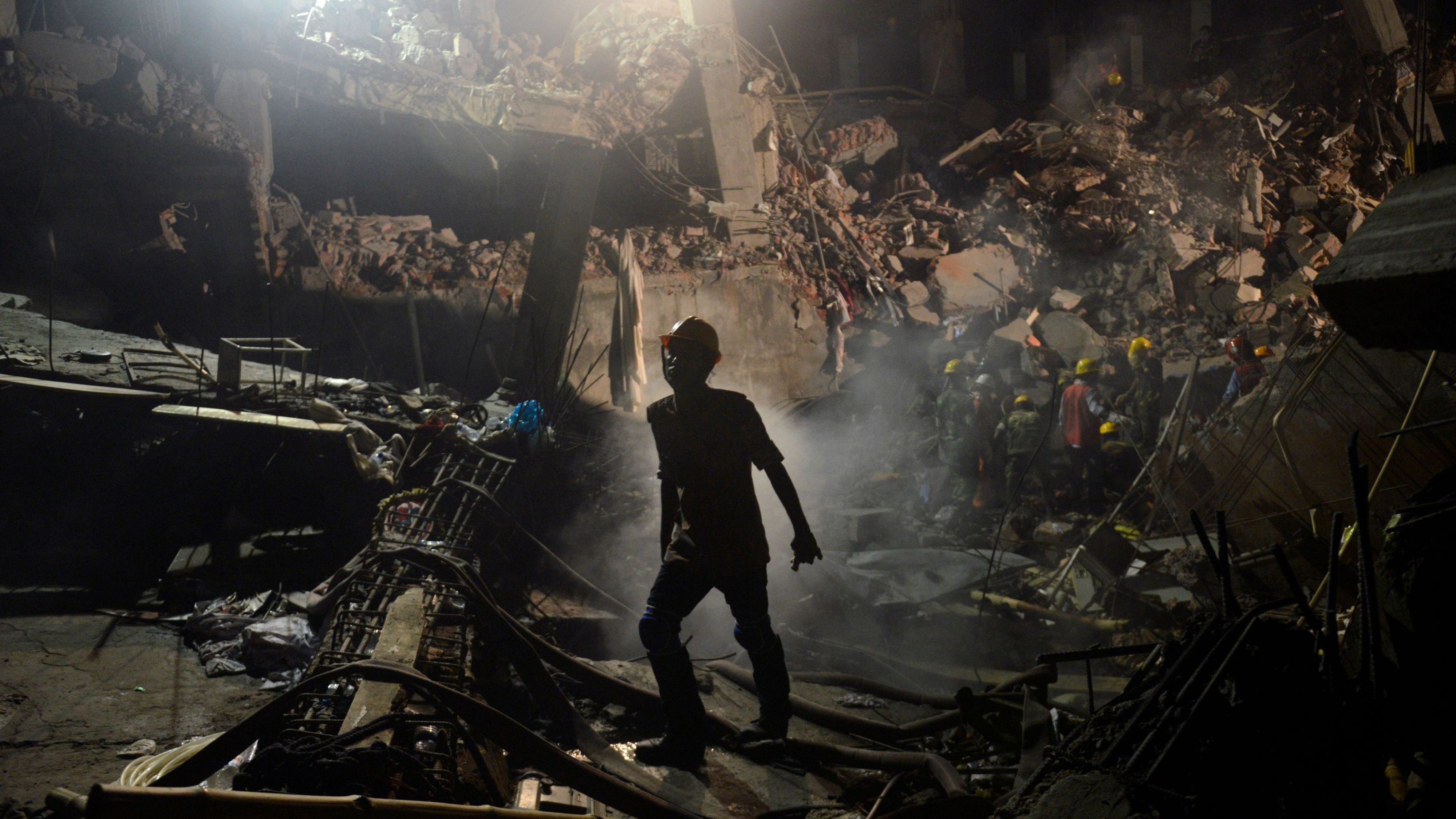Published in eastasiaforum.org on Thursday, 11 May 2017
Bangladesh’s export-oriented ready-made garments (RMG) industry has made significant contributions to the country’s economic development over the last four decades. But this will come undone unless Bangladesh can make progress on workplace safety compliance and labour rights.
In 2016, the RMG sector earned about US$28 billion in export income compared to a mere US$12,000 in 1978. Duty-free market access under the Multi-Fibre Arrangement, zero tariff access to a number of developed country markets and competitive labour costs gave Bangladeshi manufacturers a comparative advantage over other countries.
 The RMG sector has played a crucial role in earning foreign exchange for the country, improving the balance of payments and alleviating poverty for a large section of the population through employment generation. The sector now employs about 4 million workers compared to only 120,000 in 1985, and about 80 per cent of garment workers are women from poor rural households.
The RMG sector has played a crucial role in earning foreign exchange for the country, improving the balance of payments and alleviating poverty for a large section of the population through employment generation. The sector now employs about 4 million workers compared to only 120,000 in 1985, and about 80 per cent of garment workers are women from poor rural households.
Growth in the sector has also fostered various multiplier linkages in the economy to sectors such as cloth, yarn, professional services, housing services, bank services, insurance, real estate, storage, machinery and cotton cultivation.
But the industry has experienced a number of challenges, including man-made accidents. The most devastating was the collapse of the Rana Plaza building in 2013 which housed five RMG factories. This tragedy killed more than 1200 and injured over 2400 workers.
Unsafe working conditions are not uncommon, particularly in low income and developing countries. But any incidents in the Bangladeshi RMG industry create a ripple effect and catch worldwide attention because of the sector’s global linkages. Following the Rana Plaza tragedy, measures have been undertaken by the government of Bangladesh, international organisations, RMG factory owners and global retailers to improve building and worker safety.
Such compliance measures have helped to bring more credibility to the RMG sector — but at a cost. With higher compliance-related expenditures the cost of doing business has gone up. Some manufacturers have reduced their production capacity to make up for the rise in costs. But production capacity needs to increase further if the industry wants to achieve its goal of apparel exports of US$50 billion by 2021.
Bangladeshi RMG entrepreneurs have by now accepted that compliance should be an integral part of their business. But enforcing and improving compliance with safety standards is an ongoing process and has to be pursued continuously for sustainable growth of the sector.
RMG employers must also address the issue of labour rights. The Bangladesh Labour Act was revised in 2013. But the revision fell short of International Labour Organisation conventions on freedom of association and collective bargaining.
In late 2016, unrest in Ashulia, during which striking RMG workers were attacked and their leaders arrested, renewed concerns among buying countries and intensified the demands of Bangladeshi authorities over permitting trade unions in RMG factories.
In February 2017, 11 members of the US Congress expressed their concerns regarding the arrest and harassment of labour leaders and unfair dismissal of workers in Bangladesh. The EU is currently reviewing its commitment to the Bangladeshi RMG industry. Unhappiness over the issue of labour rights has been expressed many times by the EU and other major buyers.
The time has therefore come for Bangladeshi authorities to address labour rights with sincerity. The significance of freedom of association and collective bargaining principles is not well understood by many involved in the industry. A lack of understanding and trust colours the relationship between workers and factory owners.
Concern that unionised workers may become uncontrollable and hamper production is based on Bangladesh’s past experiences of unionism in other sectors. But there is a growing understanding that sustainable growth of the RMG industry is a shared responsibility of all stakeholders including manufacturers, buyers, workers and the government. That is why the concept of ‘social dialogue’ among employers and workers is being emphasised to remove distrust between employers and trade unions. Such dialogue can be useful to eliminate negative attitudes and to help clarify the responsibilities of each party.
Bangladesh of course needs resources dedicated to labour-related technical assistance programs that can improve awareness of labour rights issues. Progress made since the Rana Plaza tragedy is remarkable, but more needs to be done to make compliance measures in the RMG industry sustainable in the future.
Fahmida Khatun is the Executive Director of the Centre for Policy Dialogue (CPD), Bangladesh.
 CPD RMG Study Stitching a better future for Bangladesh
CPD RMG Study Stitching a better future for Bangladesh
